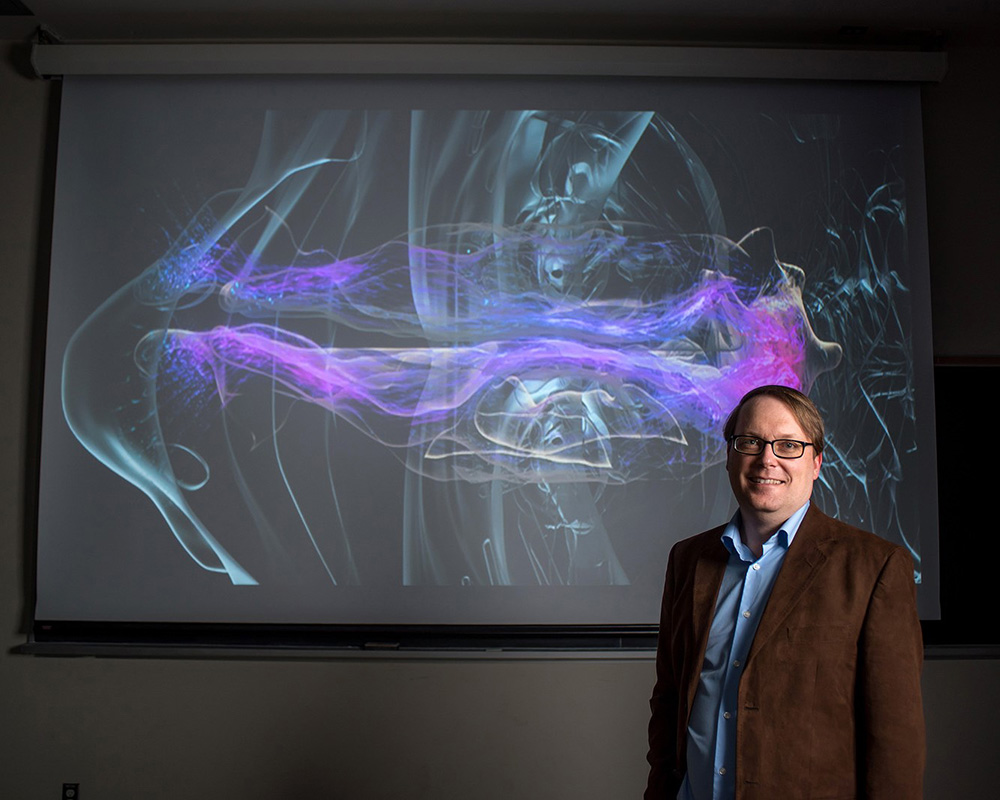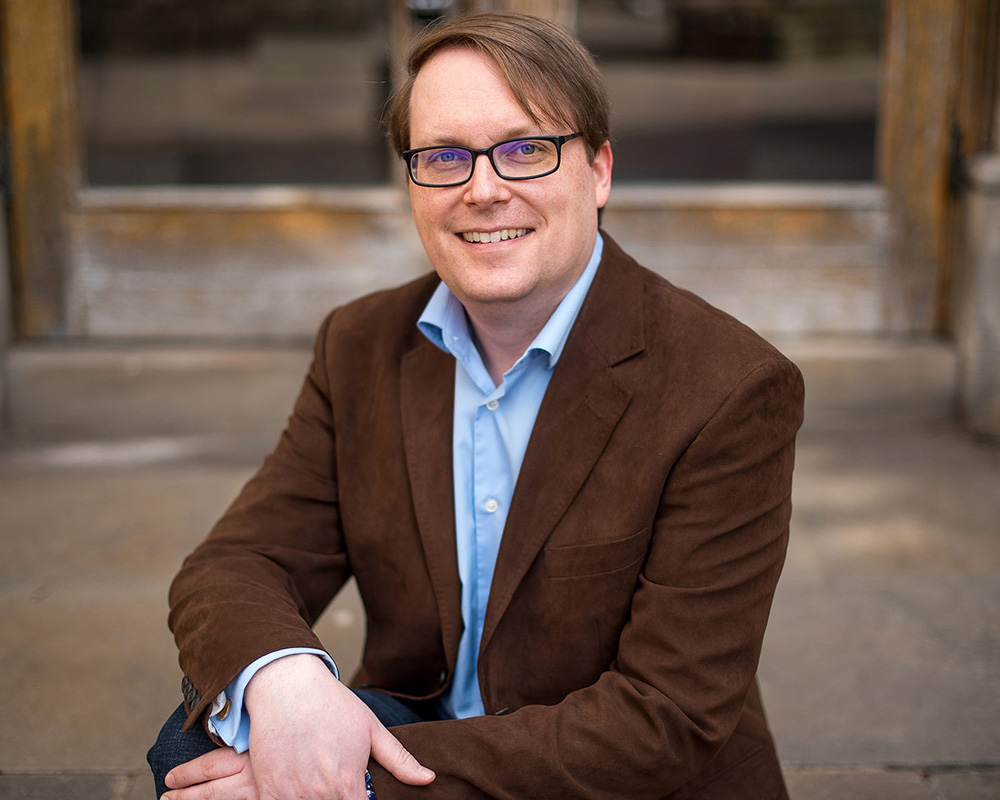It would be an understatement to say that Ryan Grant has a deep connection to Queen’s University.
His great grandfather was the head janitor for a time at the “Students Union,” as the JDUC was known then. His grandmother worked at Queen’s as well. And, like him, his mother studied here. All of this history greatly influenced his decision to return to Queen’s after nearly a decade working in the United States.
Born and raised in Ottawa, Grant came to Kingston to pursue an undergraduate degree in engineering. He ended up completing his masters and PhD in Electrical and Computer Engineering from Queen’s as well.
Grant then moved to Albuquerque, New Mexico for a postdoctoral fellowship at Sandia National Laboratories. Nearly a decade later, he was a Principal Member of Technical Staff. Since Sandia National Laboratories is affiliated with the University of New Mexico, Grant had the opportunity to train many graduate students. “I led a group of six full-time staff, many of whom were my PhD. students,” he says, “and some of my students have gone on to other places such as Berkley and Google.”
It was that desire to train students that partly lead Ryan to return to Canada. “I decided to come back here, not only because it’s home, but also so that I could build a bigger lab and have more students.”
Because Queen’s undergraduates are of a very high quality, his aim is to convince them to pursue graduate studies in his field: extreme scale systems. “Traditionally, this used to be called ‘supercomputing,’” says Grant. “For instance, weather forecasting. It can’t be done on a laptop, since you need large and accurate simulations, as quickly as possible.”
We rely on supercomputers around the world to process immense amounts of data. Grant’s work is focused on improving such supercomputers so that they can work faster and produce more accurate results. For anything from weather forecasting and climate modeling to nuclear fusion simulations and cancer treatments.
“I basically help build the tool that everybody uses to do cutting-edge science,” says Grant.
It’s an endeavor that has produced tangible results that are just as impressive and powerful as the network of computers that make them possible, such as Japan’s Fugaku supercomputer, which was crowned the world’s fastest in 2020, unseating IBM’s Summit.
“I chaired the specification for the power conserving software layer that Fugaku uses,” Grant explains, adding that supercomputers often use as much power as entire cities. Fugaku has been instrumental in the fight against coronavirus, allowing researchers to simulate the spread of droplets in closed spaces, search for the best effective treatments and so on.
“There’s nothing better than having your work integrated and eventually seeing it being used in a system,” says Grant, reflecting on the success of Fugaku.
“It’s nice that I was able to contribute in some small way to the success of that scientific endeavor,” he says. “The scientists were the ones that made that work, but I helped make their work happen faster!”

Now Grant wants to guide others toward doing the same thing. Currently, tech companies hire the best talent from universities to work on their own private computing needs. While that may be enriching from a personal, financial perspective, Grant believes research has something bigger and better to offer.
“It’s about being able to have a big impact, and help others,” he says. “The work I do is not just about making things faster, it’s about enabling ever larger and better questions to be asked.” His work on networks and communications are being integrated into the next generation of supercomputers that are just starting to be assembled now.
This is made possible partly because of the astounding rate of technological progress. “For instance, the top supercomputer in the world in the year 2000 was less powerful than a PlayStation 5.”
Two decades ago, the performance capabilities of supercomputers were measured through Gigaflops (one billion calculations per second). Grant is currently working on Exaflop systems, that can do a billion billion calculations per second.
While he’s thrilled about the staggering computing power available for researchers today, he is concerned about the human resource required to further that progress.
“We really need new talent, at least in my area,” he says. “And that’s why I’m here,” having returned to his alma mater as Assistant Professor in the Electrical and Computer Engineering department after a decade abroad. “I’m here to be a vehicle for those undergraduate and graduate students to be able to help others and have a huge impact on the world.”
